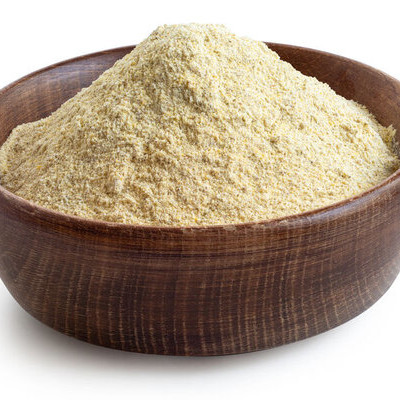
Lentil Flour
What is Lentil Flour?
Lentil flour is the fine powder obtained from milling lentil grains. It can be made from several varieties such as red, green, brown or yellow and is often used in gluten-free products.1,2
In baked goods, this flour can be used alone or in combination with other flours to provide a characteristic mild nutty flavor. It adds nutritional value due to its high protein, fiber and B vitamins content.1,2 The two main varieties are:
- Sprouted lentil flour
- Unsprouted lentil flour
Origin
Lentil (Lens culinaris Medikus) is an ancient crop which has been cultivated for thousands of years BC. They are considered one of the earliest domesticated crops. Commonly grown in India, Bangladesh, Pakistan and Egypt, it is a staple food in several cuisines around the globe.1
Today, lentil and other pulse crops are gaining popularity due to their high nutritional value. The absence of gluten in lentils make them an attractive option for celiacs diet.1
Function
Lentil flour imparts characteristic properties in baked goods when used alone or in combination with other flours:1,2,3
- Flavor: provides a characteristic mild nutty flavor.
- Color: imparts desirable colors depending on the lentil variety. Lentil protein contributes to the Maillard Browning reaction.
- Water holding capacity and reduced stalling.
- Foaming: lentil protein has characteristic foaming properties that may aid in the production of stable foams.
- Bulking agent
- Thickening
- Emulsifying
Nutrition
The consumption of lentil flour is associated with several health benefits such as reduced risk of cardiovascular disease, cancer, diabetes, and reduction of low density cholesterol. Lentil flour is a gluten-free alternative to wheat flour.1,3
Commercial production
Lentil flour is commercially manufactured through the following process:2
- Cleaning: removal of forign matter such as leaves, branches, and stalks with a screen cleaner and aspirator.
- Size sorting: using sorting machines to separate grains based on size or density.
- Conditioning: lentils are soaked in water to loosen their hull.
- Dehulling or decortication: splitting machines dehull the grain and subsequent winnowing removes the cracked hull.
- Milling: grains are milled using impact milling such as hammer- or roller milling.
- Sieving by passing through several sieves.
- Packaging: lentil flour is packed in polyethylene bags for storage.
Application
Lentil flour can be used in the manufacture of several baked goods such as breads, cookies, crackers and cake as a partial or complete substitute for wheat flour—depending on the baked good.3
Typical usage levels and corresponding functional attributes of lentil flour in baked goods:3
| Baked Good | Usage Level | Effect |
|---|---|---|
| Wheat dough for rolls | 10-30% |
|
| Layered cakes | 50% |
|
| Cookies | 25-100% |
|
| Bread | 10-15% |
|
| Biscuits | 15% |
|
| Crackers | 30% |
|
Lentil flour in chemically-leavened baked goods has good sensory acceptance. However, usage yeast-raised products has not been positive due to the lack of structure provided by gluten.3
Regulations
Lentils are considered safe by the FDA. However, lentil flour doesn’t have a specific regulation and there are proposals to establish specific definition for pulse flours.4
In the EU, lentil flour doesn’t have a specific legislation. However, lentils must comply with current EU legislation on food safety established by the EU Commission Regulation No 852/2004.5
References
- Yadav, Shyam S., David McNeil, and Philip C. Stevenson, eds. Lentil: An ancient crop for modern times. Springer Science & Business Media, 2007.
- USA Pulses. USA Pulses Technical Manual. Available at: https://www.usapulses.org/technical-manual
- Bresciani, Andrea, and Alessandra Marti. “Using pulses in baked products: Lights, shadows, and potential solutions.” Foods 8.10 (2019): 451.
- Food and Drug Administration (FDA). US Department of Health and Human Services. CFR Code of Federal Regulations Title 21, Part 112 Standards For The Growing, Harvesting, Packing, And Holding Of Produce For Human Consumption, https://www.accessdata.fda.gov/scripts/cdrh/cfdocs/cfCFR/CFRSearch.cfm?fr=112.2 , Accessed 21 February 2021.
- European Commission (Ec). Regulation (EC) No 852/2004 Of The European Parliament And Of The Council of 29 April 2004 on the hygiene of foodstuffs .Official Journal Of European Communities, 29 April 2004.

